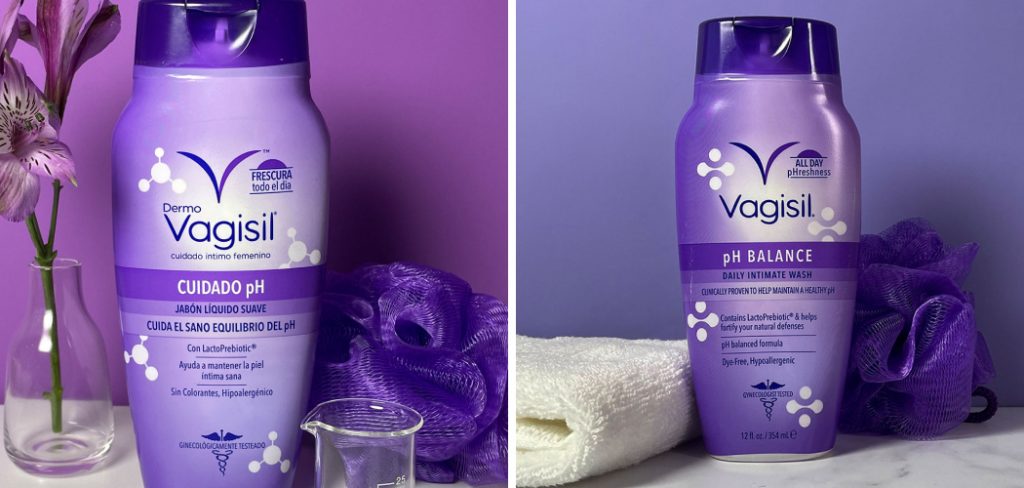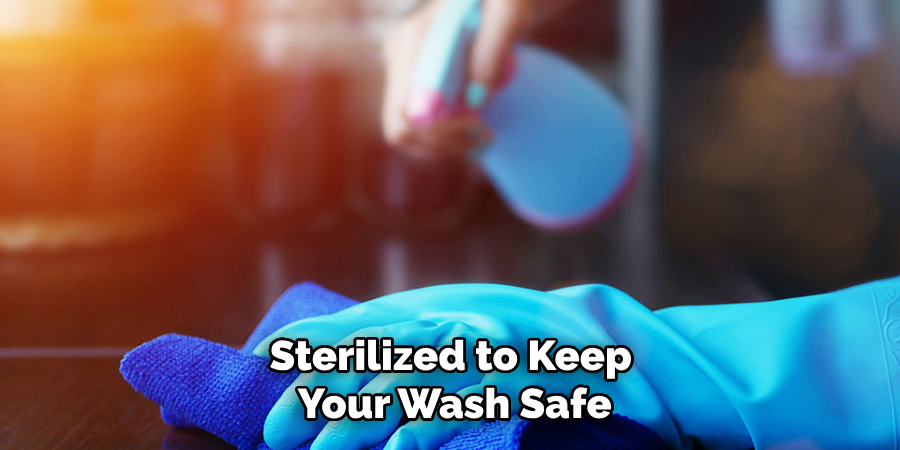Are you looking for a natural and effective way to keep your intimate area clean and fresh? Look no further. Making your own feminine wash at home is easy, and you probably already have all the ingredients in your kitchen.

How to make feminine wash at home can be a cost-effective and natural alternative to commercial products. Many store-bought feminine washes contain harsh chemicals and synthetic fragrances that can disrupt the delicate balance of the vaginal flora. By making your own, you control the ingredients, ensuring a gentle cleanse that maintains your body’s natural pH and promotes overall health.
This guide will explain the steps and ingredients needed to create a soothing and effective feminine wash tailored to your individual needs.
What Will You Need?
To make your own feminine wash, you will need the following ingredients:
- 1 cup distilled water
- 1 tablespoon apple cider vinegar or white vinegar
- 1 teaspoon baking soda
- 5 drops of tea tree oil or lavender oil (optional)
You will also need a clean container to store the finished product in. This can be a small bottle with a secure lid or a jar with a lid.
10 Easy Steps on How to Make Feminine Wash
Step 1. Prepare Your Workspace:
Before you begin, make sure that your workspace is clean and organized. This will help ensure that your feminine wash remains free from contaminants. Wash your hands thoroughly with soap and water, and sanitize the container you will be using to store your feminine wash. Lay out all your ingredients and tools to be within easy reach.

Step 2. Boil the Distilled Water:
Pour the distilled water into a small pot and bring it to a boil. Boiling the water helps to purify it further, removing any potential impurities that could affect the overall quality of your feminine wash. Allow the water to boil for a few minutes, then let it cool to room temperature before proceeding to the next step. Don’t use hot water, as this can affect the effectiveness of the other ingredients.
Step 3. Add the Vinegar:
Once the distilled water has cooled to room temperature, carefully pour it into your clean container. Next, measure 1 tablespoon of apple cider or white vinegar and add it to the water. Vinegar helps to balance the pH levels of your feminine wash, ensuring it is gentle enough for sensitive skin while providing antibacterial and antifungal properties. Stir the mixture well to ensure the vinegar is thoroughly incorporated with the water. If you prefer a milder scent, feel free to use less vinegar.
Step 4. Add the Baking Soda:
Using a clean teaspoon, measure 1 teaspoon of baking soda and add it to the mixture. Baking soda is a mild abrasive and natural deodorizer that helps to maintain the proper pH balance of your feminine wash. It can also soothe any minor irritations or itching. Stir the mixture until the baking soda completely dissolves in the water and vinegar solution. This ensures that the ingredients are evenly distributed and that the wash will be effective.
Step 5. Add Essential Oils (Optional):
If you want to add a pleasant scent and extra soothing properties to your feminine wash, you can include essential oils such as tea tree or lavender. Both of these oils have antibacterial and antifungal properties. Add 5 drops of either tea tree oil or lavender oil to the mixture. If you prefer, you can use a blend of both oils. Stir the mixture gently but thoroughly to distribute the oils evenly.
Step 6. Mix Well:
Ensure that all the ingredients are mixed well together. You can use a spoon or a whisk to stir the solution until it appears uniform gently. The goal is to ensure that the baking soda, vinegar, and any added essential oils are fully incorporated into the distilled water, creating a homogeneous mixture. This step is crucial because it ensures the active ingredients are evenly distributed for consistent effectiveness.

Step 7. Transfer to Storage Container:
Carefully pour your final mixture into the storage container you have prepared. Use a funnel if necessary to avoid spills. Ensure the container is secure and airtight to preserve the quality and potency of your feminine wash. Label the container with the date and contents so you can keep track of when it was made.
Step 8. Store Properly:
Store your homemade feminine wash in a cool, dark place, such as a cabinet or a drawer, to preserve its freshness and efficacy. Avoid storing it in areas with high moisture or temperature fluctuations, as this can degrade the quality of the essential oils and other ingredients. If you’ve added essential oils, it’s essential to keep the wash away from direct sunlight, which can cause the oils to break down.
Step 9. Shake Before Use:
Before each use, give the container a gentle shake to ensure all ingredients are well-mixed. Natural products tend to separate over time, so this step is essential for maintaining the consistency and effectiveness of the wash. Shaking it gently will recombine any settled ingredients without causing bubbles or froth.
Step 10. Use as Needed:
To use your homemade feminine wash, make sure you are in a comfortable space. Wet the external genital area with water, then apply a small amount of the feminine wash using your hand or a clean cloth. Gently cleanse the area, avoiding any internal use as this can disrupt natural flora and pH balance. Rinse thoroughly with warm water and pat dry with a clean towel. Use this wash as part of your daily hygiene routine, as needed, to keep the intimate area fresh and balanced.
Following these simple steps, you can easily create your own personalized feminine wash at home.

5 Additional Tips and Tricks
1. Choose Natural Ingredients
Opt for ingredients that are gentle and soothing for sensitive skin. Popular choices include coconut oil, tea tree oil, and chamomile extract. These ingredients not only cleanse but also provide anti-inflammatory and antimicrobial benefits.
2. Avoid Harsh Chemicals
Avoid harsh chemicals like parabens, sulfates, and artificial fragrances. These can irritate the delicate skin in the intimate area and disrupt the pH balance, leading to infections and discomfort. Opt for natural, organic products instead.
3. Maintain pH Balance
Maintain the pH balance of the feminine wash around 4.5 to 5.5, which is close to the natural vaginal pH. Adding some apple cider vinegar or lactic acid can help achieve this balance.
4. Preservation
Since natural products can spoil quickly, consider adding natural preservatives like grapefruit seed extract or vitamin E. Store your feminine wash in an airtight container to extend its shelf life.
5. Conduct a Patch Test
Before using your homemade feminine wash extensively, do a patch test on a small area of skin to ensure no adverse reactions. This step is crucial for avoiding potential skin irritations or allergies.
With these additional tips and tricks, you can ensure that your homemade feminine wash is safe, effective, and tailored to your specific needs as a woman.

5 Things You Should Avoid
1. Alcohol-Based Ingredients
Alcohol can be very drying and irritating to sensitive skin in the intimate area. To prevent dryness and discomfort, it’s best to avoid using alcohol-based ingredients in your feminine wash.
2. Strong Fragrances
While it might be tempting to add perfumes or potent fragrance oils to your wash, these can cause irritation or allergic reactions. Opt for mild, natural scents or go fragrance-free to avoid any potential problems.
3. Synthetic Dyes
Adding color to your feminine wash may seem appealing, but synthetic dyes can lead to irritation and allergic reactions. Always choose natural or no coloration to ensure the product is gentle on your skin.
4. Overly Acidic or Alkaline Ingredients
Ingredients that significantly alter the pH balance of the wash can disrupt the natural vaginal environment, leading to bacterial or yeast infections. Ensure that all components maintain a pH close to the natural vaginal pH of 4.5 to 5.5.
5. Using Tap Water Without Sterilization
Regular tap water can contain bacteria and other contaminants. If you must use water in your formulation, ensure it is distilled or thoroughly sterilized to keep your wash safe and uncontaminated.
By avoiding these potentially harmful ingredients and practices, you can create a feminine wash that is both gentle and effective for daily use.

Conclusion
How to make feminine wash at home allows you to control the ingredients and customize the formula to suit your personal needs.
By choosing natural, gentle ingredients and steering clear of harsh chemicals, you can create a safe and effective product. Maintaining the appropriate pH balance and incorporating natural preservatives will ensure the longevity and safety of your wash. Remember to conduct a patch test to rule out any potential allergies or reactions. Avoiding alcohol-based ingredients, strong fragrances, synthetic dyes, and unsterilized tap water will help keep your feminine wash gentle and irritation-free.
With careful attention to these tips and guidelines, your homemade feminine wash can be an excellent addition to your personal care routine, promoting comfort and well-being in your intimate area.
About the Author
Jane Hubbard is a passionate beauty expert with a wealth of experience in makeup, hair, and overall beauty techniques. After years of working as a hairdresser specialist, she followed her entrepreneurial spirit and started her own consultancy business.
Jane has always been driven by her desire to help others feel confident in their own skin, and she does this by sharing her knowledge, experiences, and practical beauty tips. Through her consultancy, she empowers individuals to embrace their unique beauty, offering tailored guidance that boosts both self-esteem and personal style.
Professional Focus
- Specializes in makeup, hairstyling, and beauty consulting.
- Provides personalized beauty advice, tips, and techniques to help individuals feel confident in their appearance.
- Dedicated to staying up-to-date with the latest industry trends and developments.
- Passionate about creating a comfortable and empowering experience for every client.
Education History
- University of Craft and Design – Bachelor of Fine Arts (BFA) in Woodworking and Furniture Design
- Woodworking Apprenticeships – Extensive hands-on training with skilled craftsmen to refine carpentry and furniture making techniques
- Online Courses & Masterclasses – Continued education in advanced woodworking techniques, design principles, and specialized tools
Expertise:
- Makeup artistry, hairstyling, and beauty consulting.
- Personalized beauty techniques to enhance confidence and self-expression.
- Educating clients on how to maintain their beauty routines at home.
